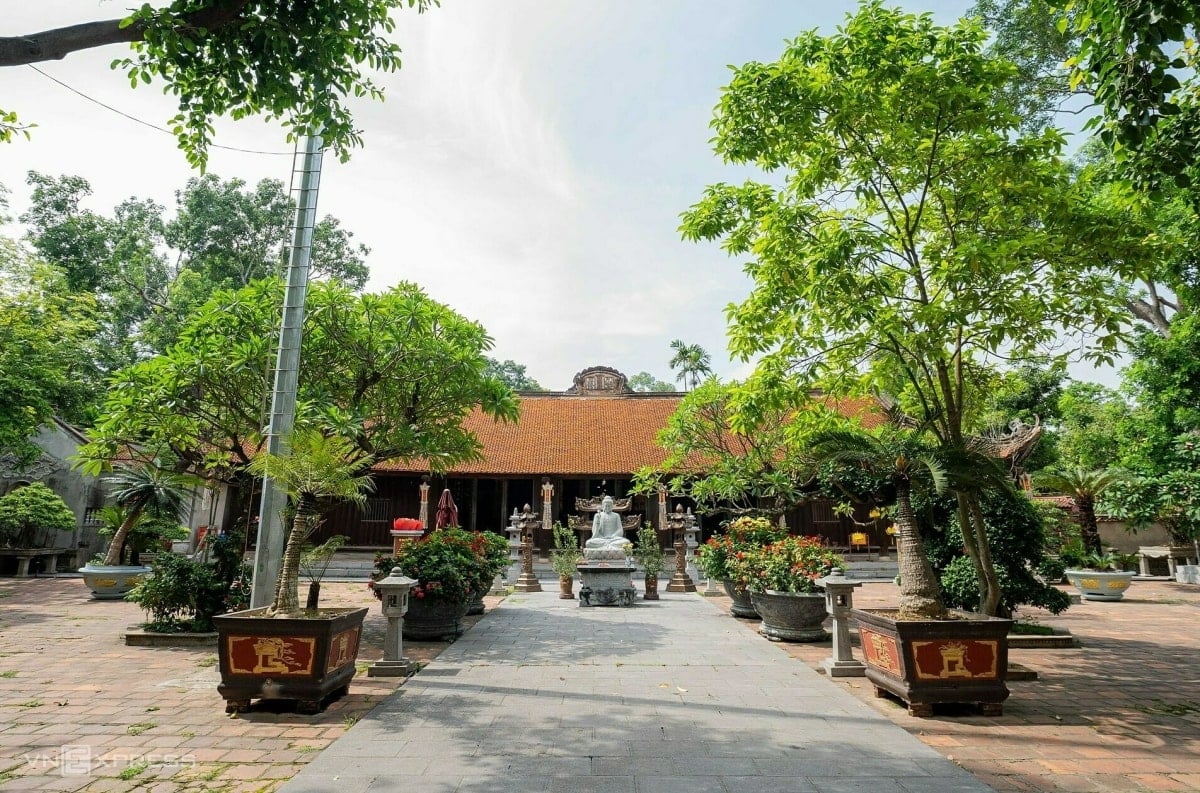
Vinh Nghiem Pagoda (or Duc La Pagoda) in Quoc Khanh village, Tan An commune, preserves more than 3,000 woodblocks of sutras, medical books, and Buddhist precepts, mainly from the 17th to 19th centuries. The project is located in the Yen Tu - Vinh Nghiem - Con Son Kiep Bac complex, which was recognized by UNESCO as a World Cultural Heritage at the 47th session on July 12.
Once a center for training monks during nearly 8 centuries of formation and development of the Truc Lam Yen Tu Buddhist sect, Vinh Nghiem Pagoda has diverse relics such as: a system of worship statues with more than 100 statues; horizontal lacquered boards - parallel sentences, a collection of wooden Buddhist scriptures; 8 steles recording the entire historical development process of Vinh Nghiem Buddhist Center...
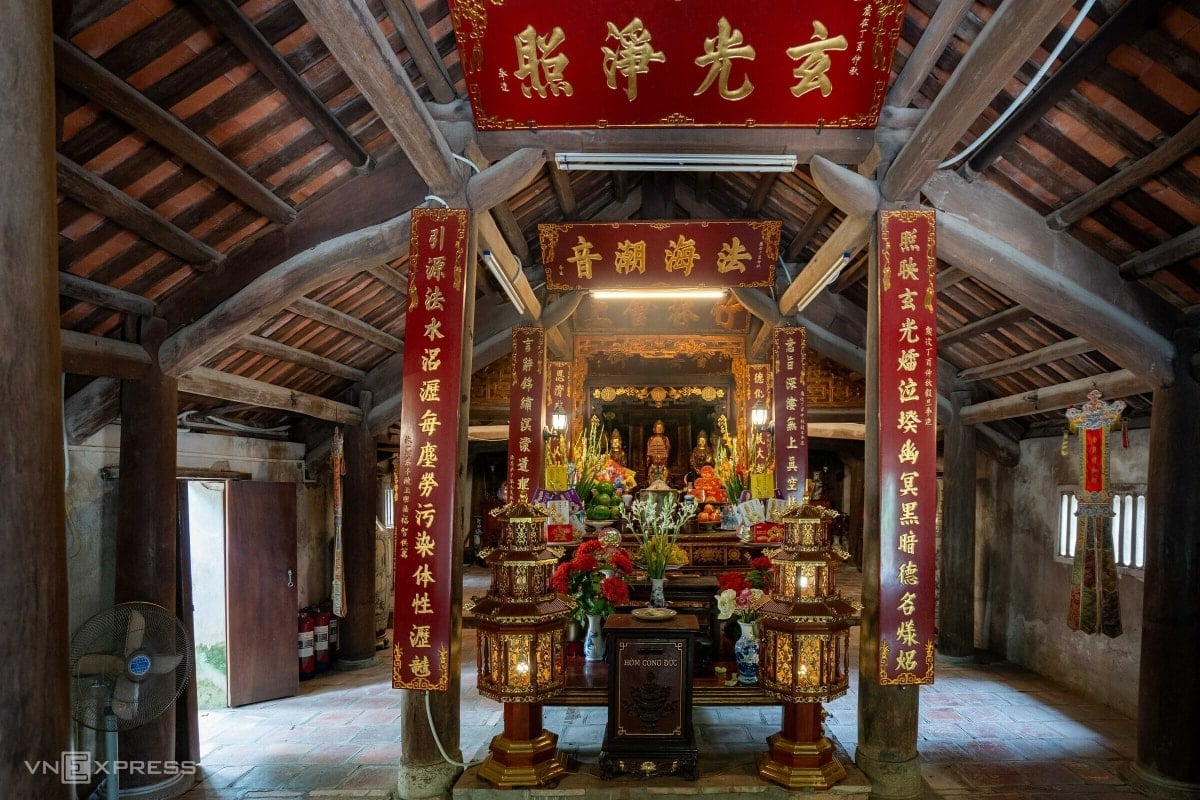
The pagoda is located on a land area of about one hectare, planned along a main axis facing southeast, consisting of four main blocks: the Heavenly Palace, the Upper Palace, the First Patriarch's House, the bell tower, the Second Patriarch's House along with a number of other auxiliary items.
The pagoda worships three patriarchs including the First Patriarch Buddha Emperor Tran Nhan Tong, the Second Patriarch Phap Loa, and the Third Patriarch Huyen Quang, who founded, transmitted, and developed the Truc Lam Yen Tu Zen sect, contributing to the construction and expansion of Vietnamese Buddhism.
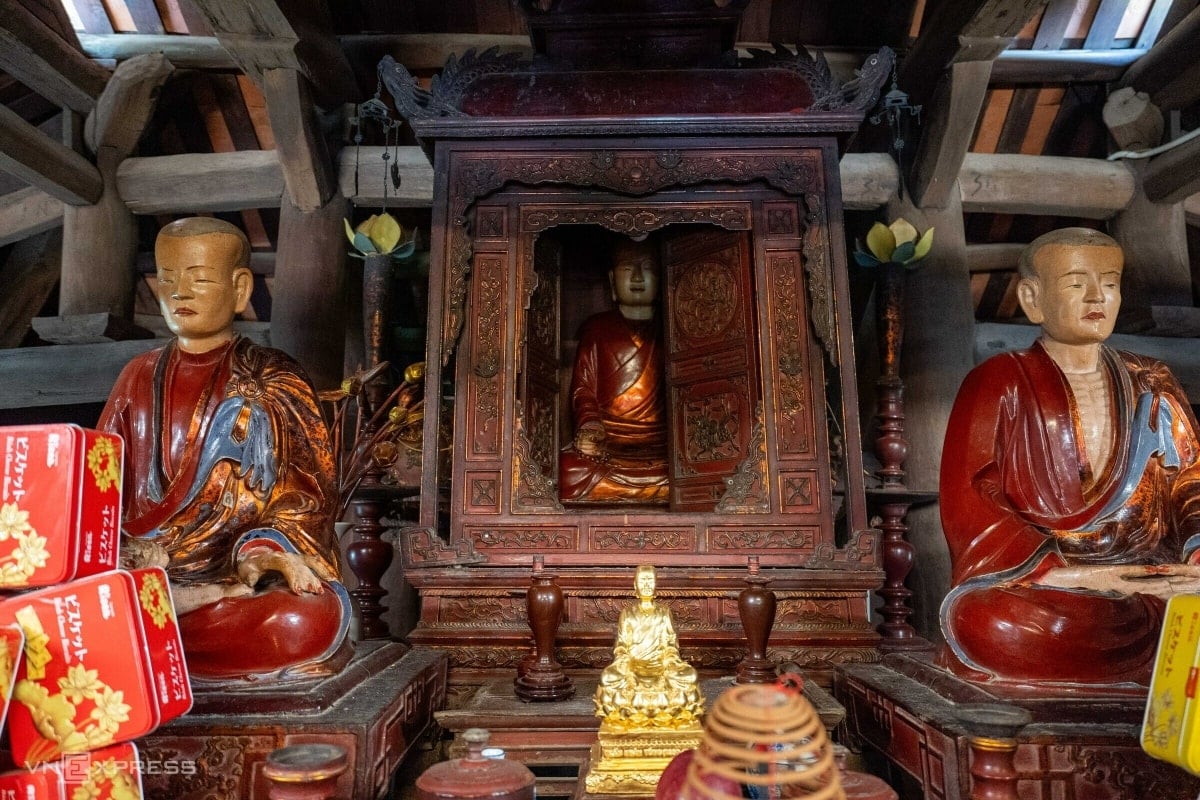
Three statues at the pagoda, carved from jackfruit wood from the 19th century, have artistic and historical value and were recognized as national treasures in 2024.
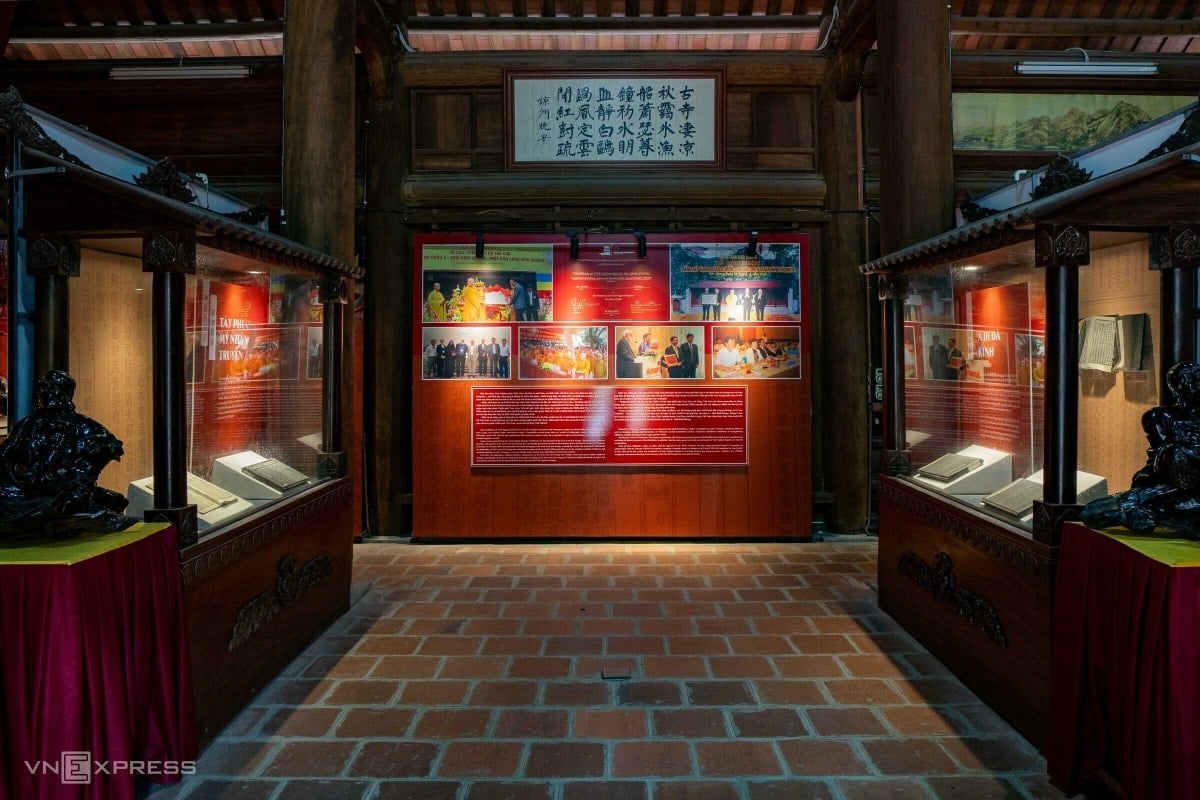
The Vinh Nghiem Pagoda Woodblock Storage House was built to preserve more than 3,000 precious woodblocks of the Truc Lam Zen sect. The project includes an exhibition area and a storage area with a sturdy wooden design, resistant to moisture and termites. Previously, the woodblocks were stored in the Tam Bao house and the temple corridor, at risk of termites, mold, and lack of specialized storage conditions.
Among them, the Woodblock of Kinh Tin Luc, carved in 1876, in Chinese characters, includes many Taoist works and a few Confucian and Buddhist works. The book's content encourages people to do good, punishes evil, teaches life skills, and is inspirational. In addition to the content of encouraging good, at the end of the book there are some folk remedies.
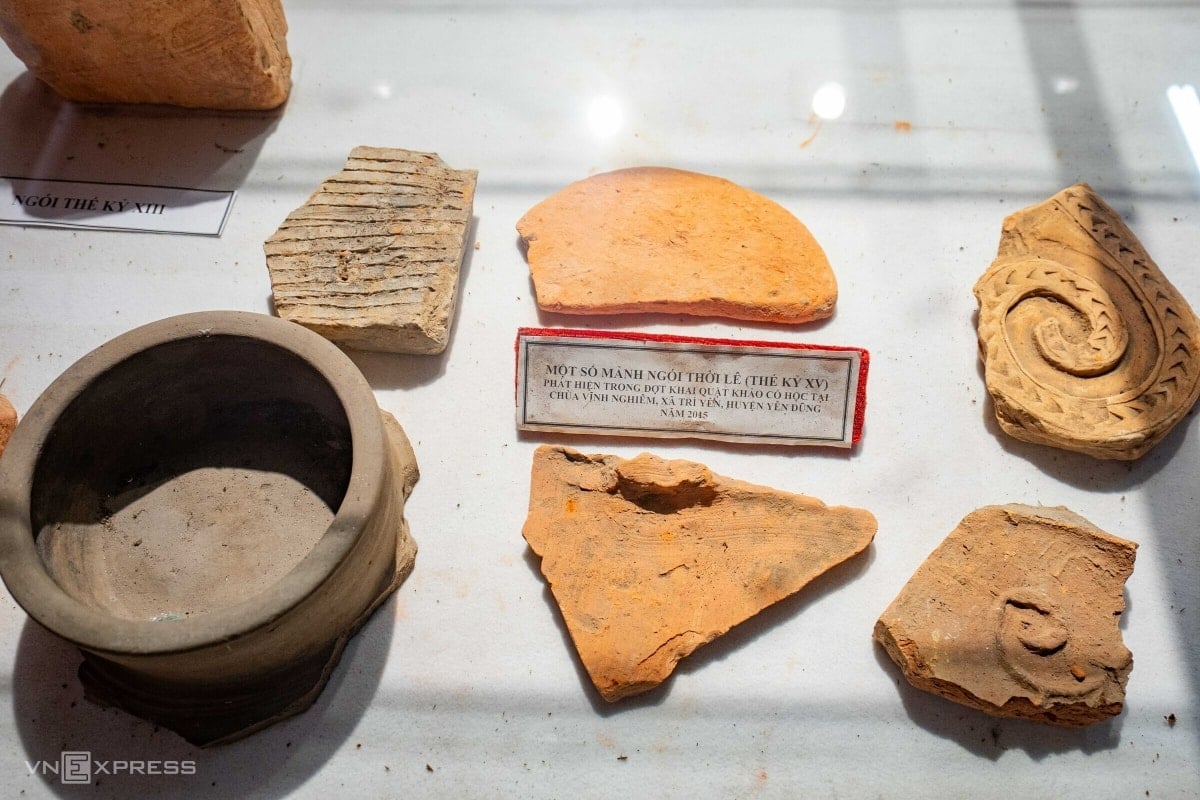
The museum also displays many ancient tiles dating from the 6th to 15th centuries, discovered during the excavation in 2015.
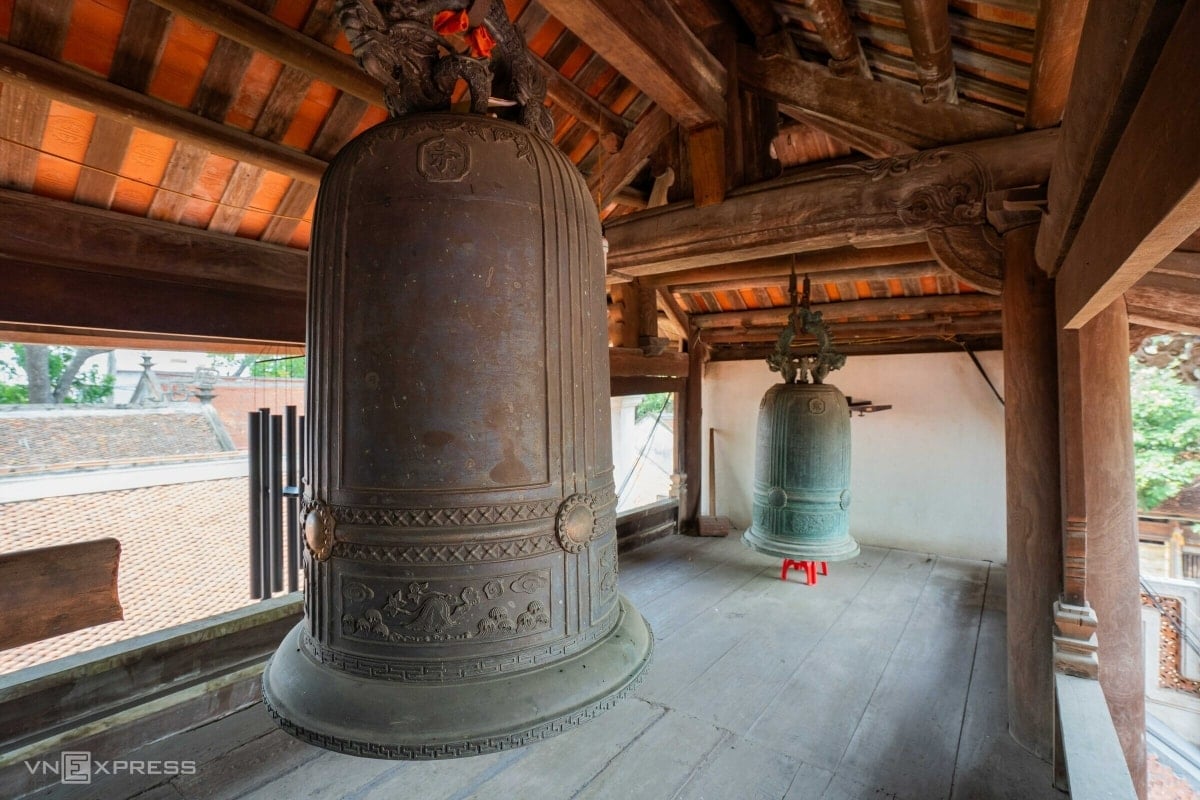
The bell tower of Vinh Nghiem pagoda consists of two floors, nearly 8 m high, with a 6-storey overlapping roof, located along the vertical axis between the first and second ancestral houses.
The upper floor has a wooden floor, hanging a large bell cast in the early 19th century. The lower floor is used as a reception area, the ironwood frame structure is elaborately carved in the Nguyen Dynasty style, creating a beautiful and harmonious architectural style.
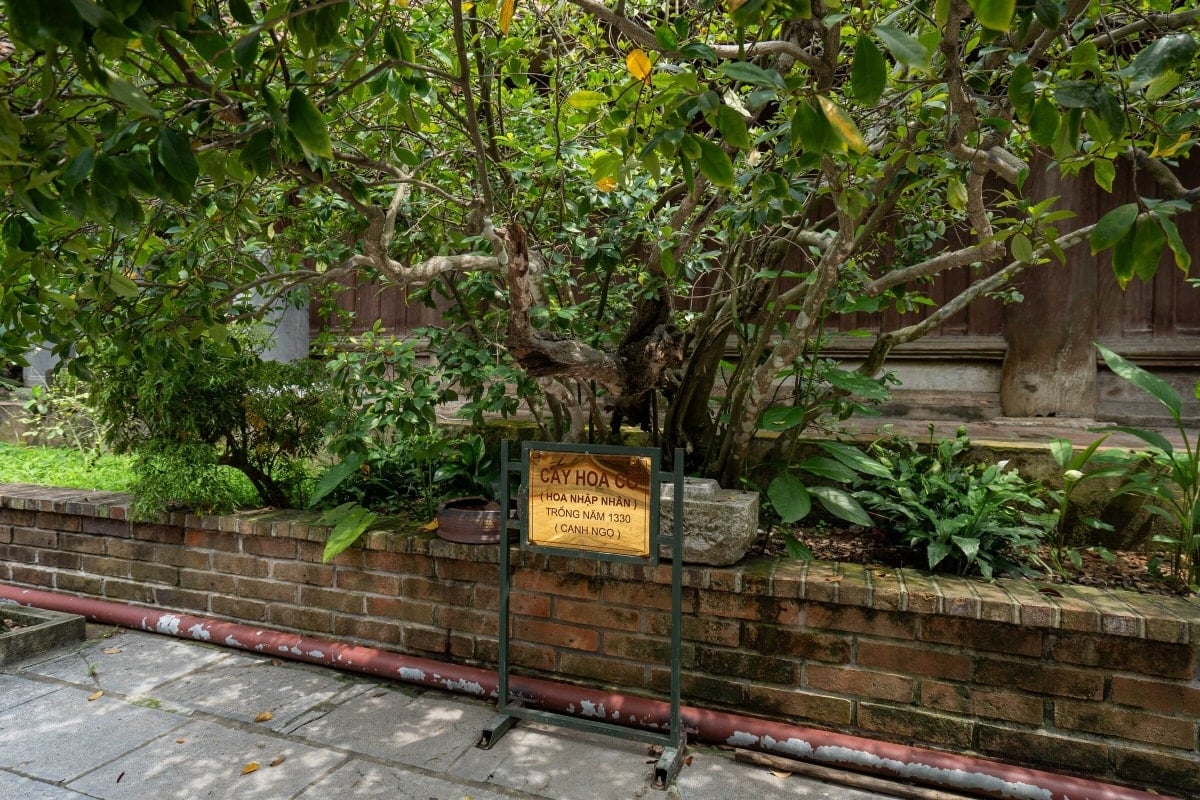
The space in front of the shrine of the Three Holy Ancestors is planted with many types of trees, including the Nhap Nhan tree planted in 1330.
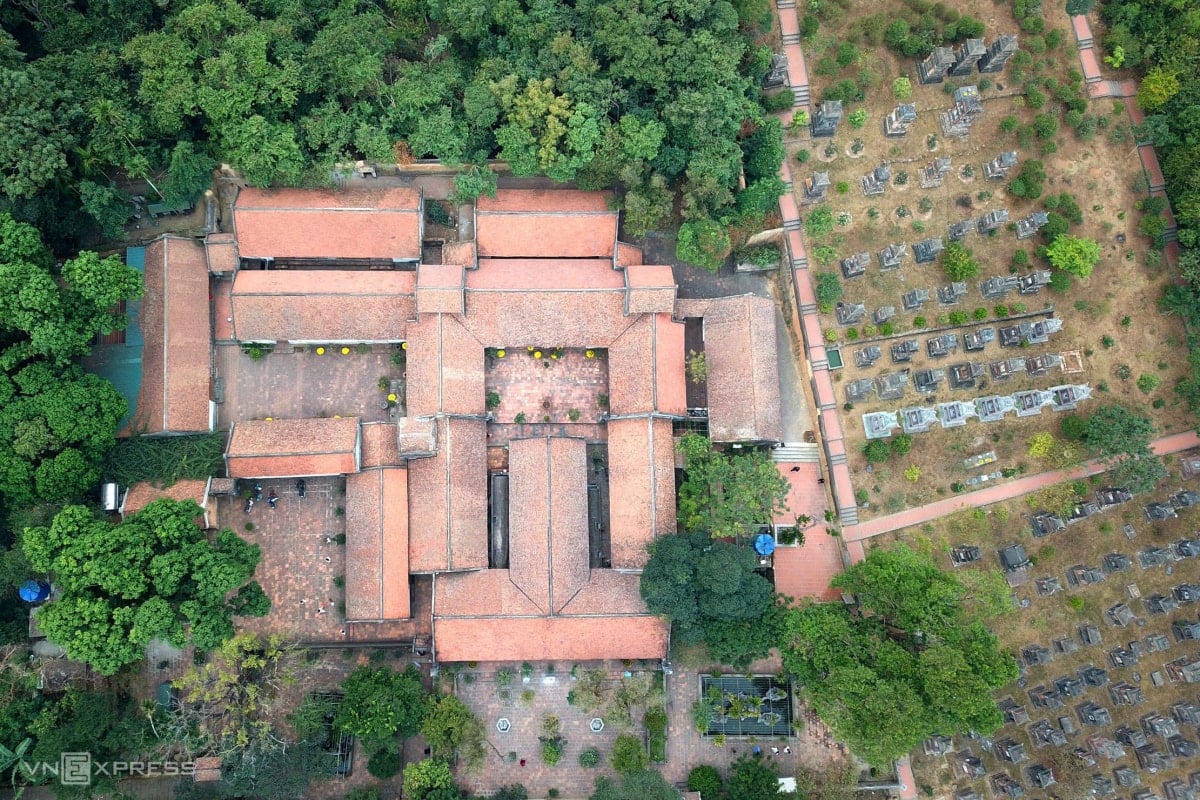
40 km from Vinh Nghiem Pagoda, Bo Da Pagoda is one of the oldest and most unique pagodas in Kinh Bac region, located on Phuong Hoang mountain (Bo Da mountain) in Van Ha ward, Bac Ninh province.
Bo Da Pagoda was built around the 11th century, during the Ly Dynasty, and underwent many major renovations under the Le Trung Hung Dynasty.
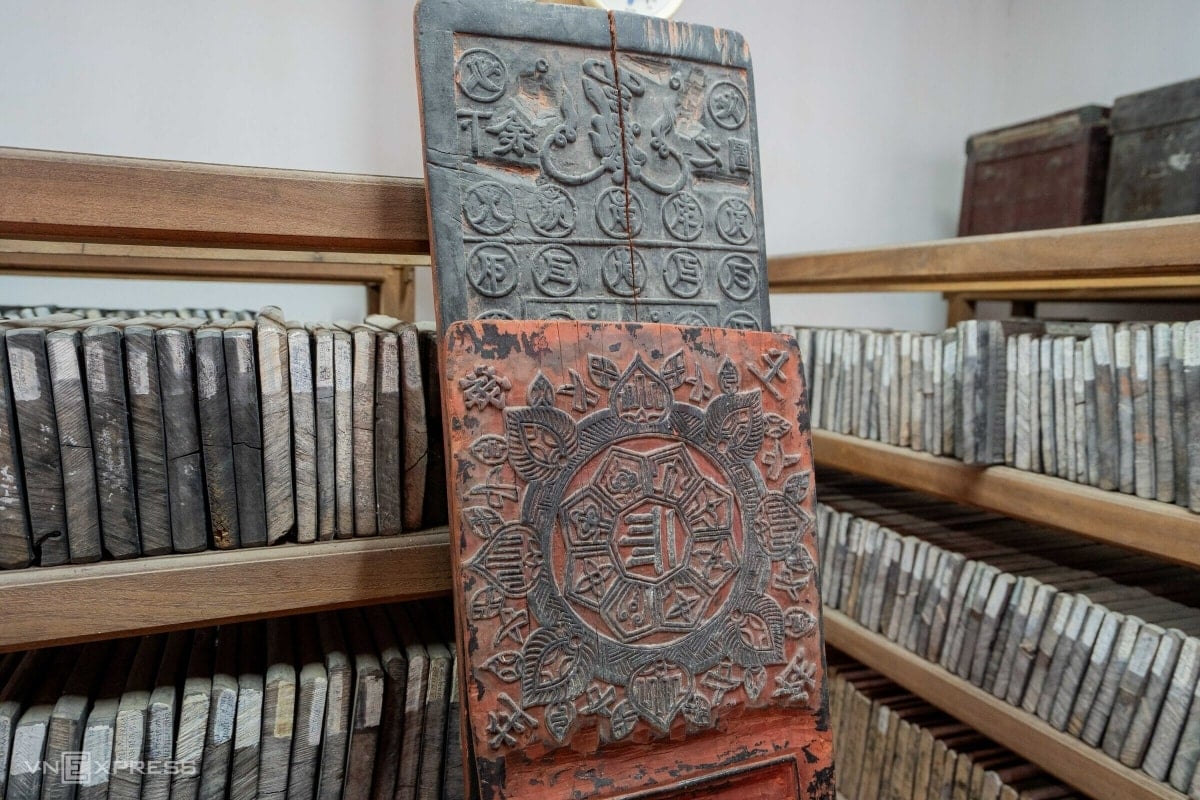
Bo Da Pagoda's woodblocks are one of the oldest and most valuable Buddhist scripture woodblocks in Vietnam, with nearly 2,000 carved panels made of ebony wood dating from the mid-18th century to the early 20th century, most of which were carved during the reign of King Le Canh Hung (1740-1786).
These woodblocks are well preserved, still sharp after nearly 300 years, and are termite-free due to the special wood used for carving and the absence of preservatives. The storage room is equipped with a clock to monitor temperature and humidity to help control the environment in the room.
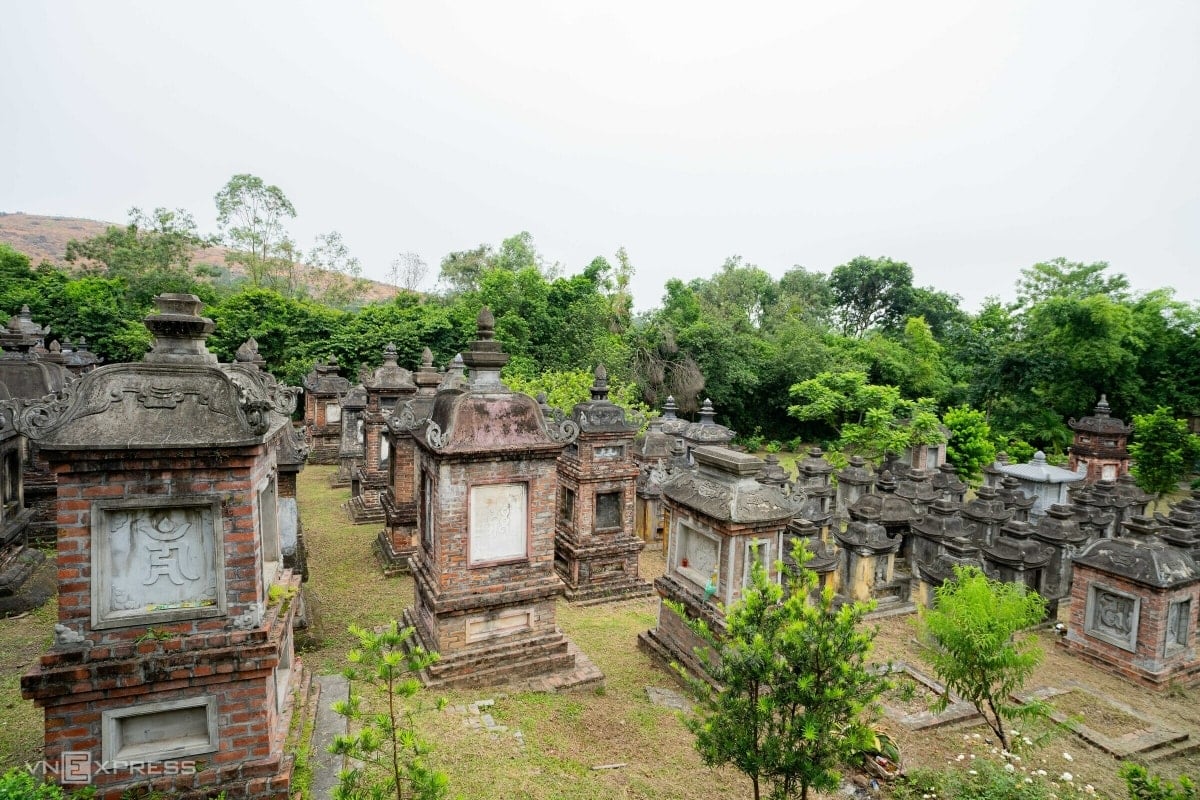
Bo Da Pagoda's tower garden is located on the slope of Phuong Hoang mountain with an area of nearly 8,000 m2, considered the largest and most beautiful ancient tower garden in Vietnam. There are about 110 large and small towers and tombs, of which 97 are hundreds of years old, burying the ashes and relics of more than 1,200 monks and nuns of the Lam Te Zen sect throughout the country.
The architecture of the tomb towers in the garden is mostly 3-4 storey towers, 3-5 m high, the tower of the founder is larger and more massive. These towers are built with bricks, mountain stones, mortar from molasses and paper pulp, creating a solid and durable structure over many centuries.
The tower garden was recognized as a special national historical and architectural relic in 2016.
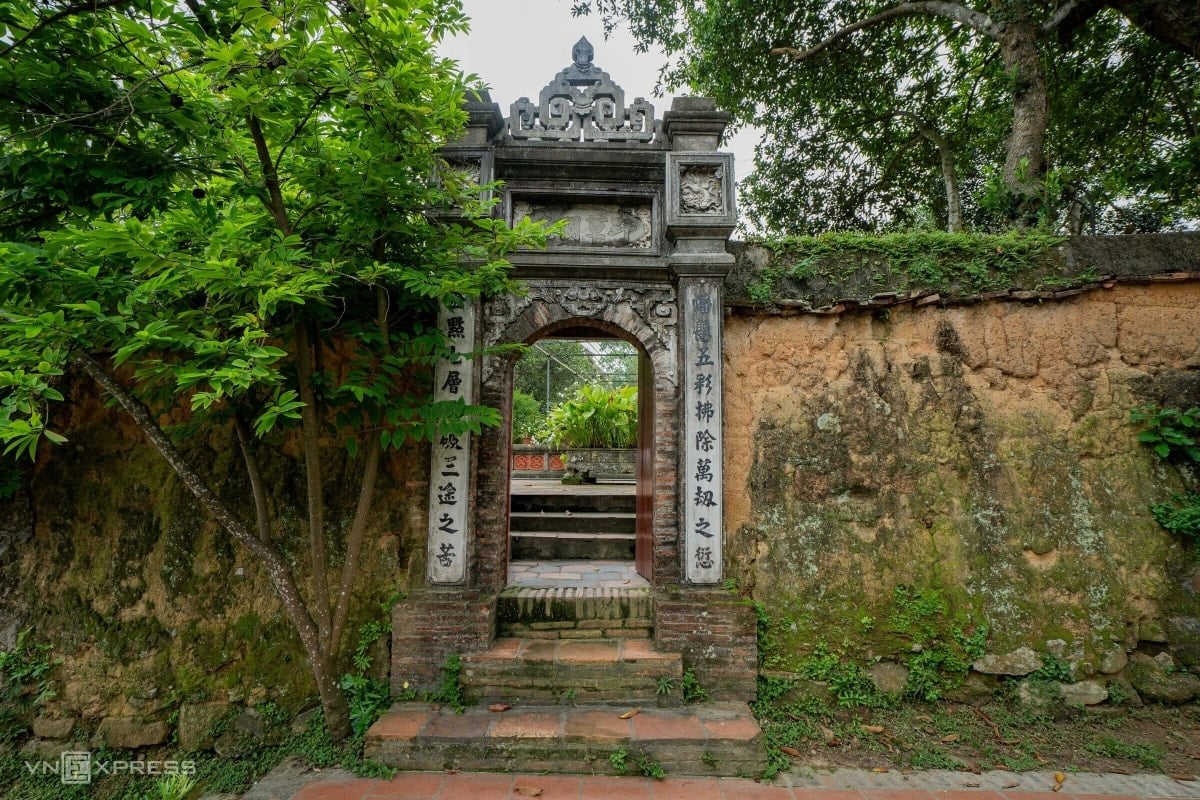
Surrounding the tower garden is an ancient wall built of mountain stone, bricks and rammed earth, creating a quiet, peaceful space, very suitable for the atmosphere of practice, remembrance and meditation.
Source: https://baohaiphongplus.vn/hai-ngoi-chua-co-o-bac-ninh-duoc-unesco-vinh-danh-di-san-416694.html


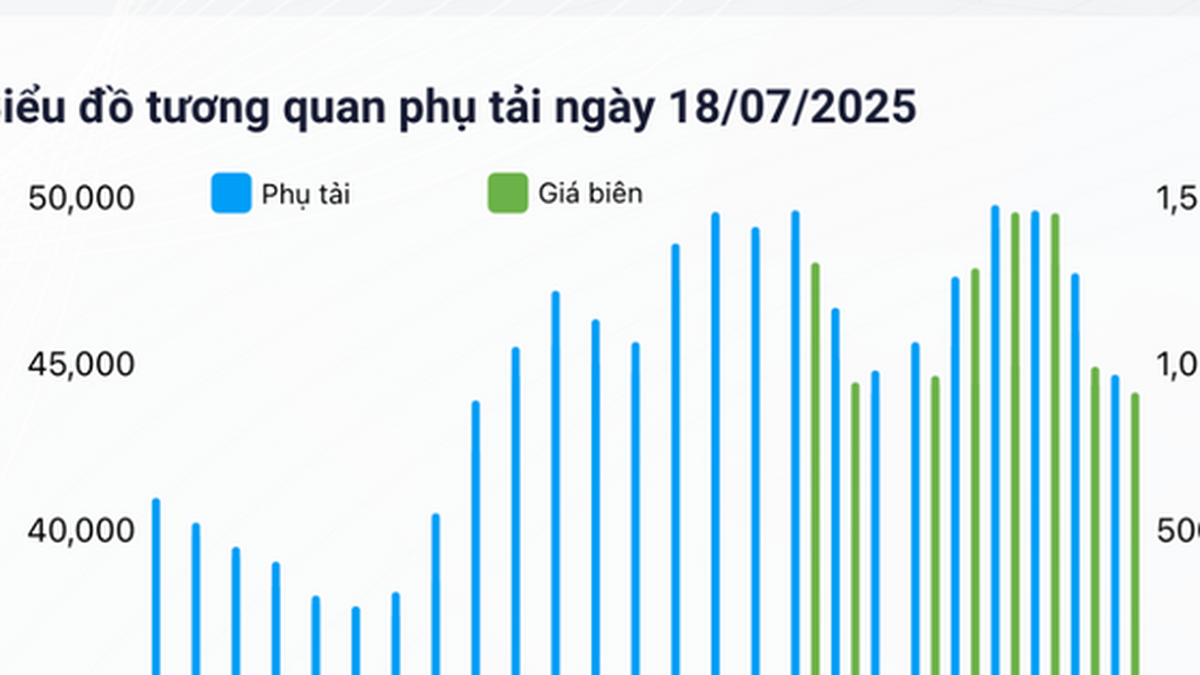






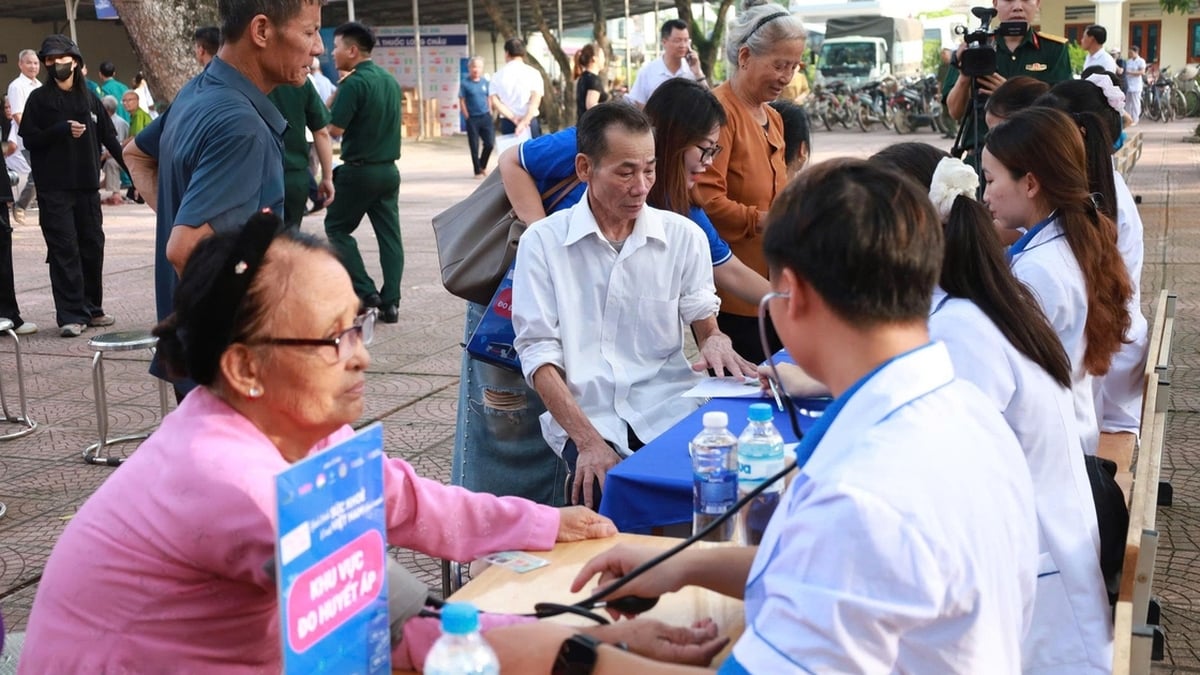
























































































Comment (0)